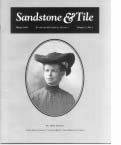 |


Nettie Maria Stevens (1861-1912)
This photograph appears in Sandstone & Tile, Stanford Historical Society, Vol. 17, No. 1: Winter, 1993.
An outstanding student, Nettie Stevens completed in only two years the four-year course at Westfield Normal School in Massachusetts. She graduated with the highest academic scores in her class. At Stanford, she received her B.A. in 1899 and her M.A. in 1900. Stevens continued her studies in cytology at Bryn Mawr, where she was influenced by the work of the previous head of the Biology Department, E. B. Wilson, and by that of his successor, T. H. Morgan.
Her most important scientific contribution was her work on the chromosomal determination of sex, initially reported in her 1905 paper, "Studies in Spermatogenesis, with Especial Reference to the Accessory Chromosome." Working independently of Wilson, Stevens came simultaneously to the same conclusion as Wilson: that sex was determined by a single difference between two classes of sperm-the presence or absence of an X chromosome. (Although she had received her Ph.D. in morphology in 1903 under T. H. Morgan, it was not until 1906 that Morgan accepted the idea that there were two classes of sperm.)*
The 1901 MBL Report lists Nettie Stevens as an undergraduate student from Bryn Mawr and, in the 1905 Report, as a graduate student. At that time, she conducted research in zoology with T. H. Morgan.
Following Stevens' death in 1912, Thomas Hunt Morgan paid tribute to her contributions to science:
“Modern cytological work involves an intricacy of detail, the significance of which can be appreciated by the specialist alone; but Miss Stevens had a share in a discovery of importance, and her name will be remembered for this, when the minutiae of detailed investigations that she carried out have become incorporated in the general body of the subject.”**
*Ogilvie, Marilyn Bailey and Clifford J. Choquette. "Nettie Maria Stevens (1861-1912): Her Life and Contributions to Cytogenetics," Proceedings of the American Philosophical Society, Vol. 125, No. 4, August 1981.
**Thomas Hunt Morgan. "The Scientific Work of Miss N. M. Stevens." Science, Vol. 36 (No. 928), October, 1912. |